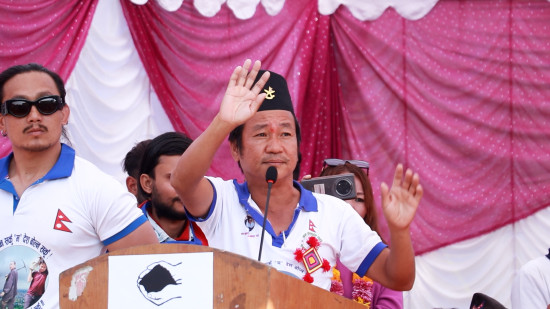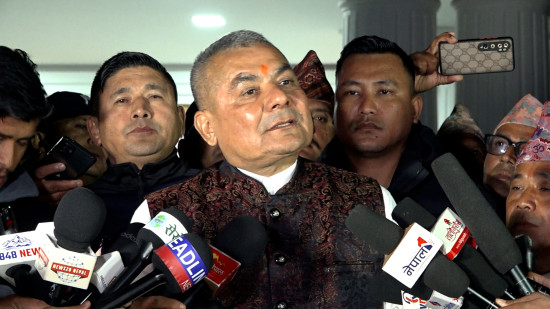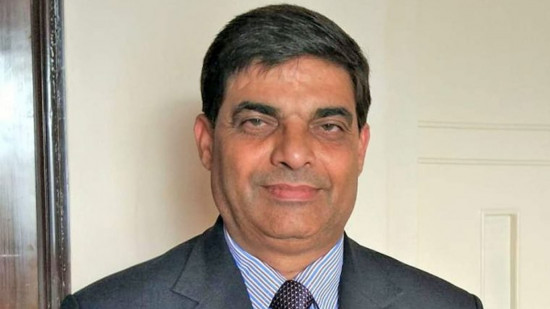Nepali-American Vice-Mayor On A Mission To Improve Local Governments In His Country Of Birth
KATHMANDU: In January 1994, when Kiran Sitoula was about to fly to the US for higher studies, his father told him: "Son, come back home as an engineer." However, after scoring a zero in a math quiz, he realised that he lacked aptitude for engineering studies. He switched to accounting, and became a Certified Public Accountant. Sitoula now works as a tax officer, but always takes time off his busy schedule to serve his community as a volunteer. His passion for community service was the key in his recent re-election as Vice Mayor of Town of Indian Head, a small municipality in Charles County of Maryland. He is better known as Ron Sitoula in Town of Indian Head. Sitoula may have failed to fulfill his dad's dream, but he is always looking for an opportunity to serve Nepal, the country of his birth, as well. When a 7.8 magnitude earthquake devastated Nepal in April 2015, Sitoula flew to Kathmandu with relief. Now, he is back in Nepal with a different mission: empower Nepali mayors, deputy mayors and ward councils so local governments deliver effective services. BOTTOM-UP In 2016, Alaina B. Teplitz, who was then serving as US ambassador to Nepal, was in Maryland, and she wanted to interact with the local Nepali-American community. It had been just one year since Sitoula was first elected as Vice Mayor, and Nepal was also gearing up for the first local elections since 1997. Sitoula had a proposal for Teplitz: I have experience of serving my community as Vice Mayor, and I would like to share it with the local elected representatives of Nepal, the country of my birth. Teplitz asked him to write a proposal, which he did in a matter of few days. US Department of State and US Embassy in Nepal agreed to provide a grant for Sitoula to conduct workshops for the local elected representatives in Nepal. Sitoula did not want to receive the grant for himself, and he re-directed it to University of Maryland. In 2017, after Nepal's first local elections in 20 years, he came to Nepal to assess the needs of Nepali mayors, deputy mayors and ward chairpersons. He was accompanied by Aisha Washington of University of Maryland and Thomas Reynolds of Maryland Municipal League, which is equivalent of Municipality Association of Nepal (MuAn). They interacted with mayors, deputy mayors and ward chairs in Kathmandu, Lalitpur, Bhaktapur, Kavre, Banke and Bardiya. They found that most local-elected representatives needed training to prepare budget plans, deal with legal cases and deliver services in an efficient way. The findings of the need assessment became a blueprint of the training course and material prepared by the University of Maryland for Nepali politicians running local governments. Sitoula says: "There is a growing resentment in Nepal against those donors who impose their agendas from above, and without identifying the needs of local people. But we first assessed the needs of mayors and deputy mayors before preparing training course for them." SERVE, NOT GOVERN Town of Indian Head, where Kiran Sitoula is Vice Mayor, is one of the smallest municipalities in the US. Only about 4,500 people live there; and 2,671 of them are eligible to vote. In small American municipalities like Town of Indian Head, mayors and deputy mayors serve their communities as volunteers. They do not draw salaries or allowances from their municipalities. Sitoula says: "I buy bread and butter with the salary that I get as a tax officer, not as Vice Mayor." In Nepal, all mayors, deputy mayors and ward chairs draw monthly salaries, even if only a few people live in their municipalities or villages. Party politics does not exist in small American municipalities, and all candidates vie for public posts independently. All candidates run for mayoral post, and the one who secures the highest number of votes becomes mayor. The one who comes second becomes Vice Mayor. Since no one beats anyone directly, there is no room for personal animosity. In Nepal, party politics exists even in Manang, a trans-Himalayan district with a very few voters. Sitoula abstains from commenting on the way local governments are formed, and operate in Nepal. But he advises Nepali mayors and deputy mayors to serve, not govern. And there is a big difference between the two words. BREAKING THE BARRIER It was difficult for a Nepali-American to be elected as Vice Mayor of a municipality, where Nepali-American people are far outnumbered by white and black voters. When Sitoula was elected as Vice Mayor for the first time, Town of Indian Head had only two Nepali-American people eligible to vote in an American election. Sitoula needed to win hearts and minds of white as well as black voters. He did that in May 2015, and he did that again early this year. Asked how he became Vice Mayor of an American municipality dominated by white and black voters, he did not give a direct answer. Instead, he drew an analogy between him and a skilled artisan. He said: "Ask an artisan how long it might take for him to make a khukuri, he would probably say: two weeks and 18 years. He might finish making a khukuri in just two weeks, but not if he did not have experience of making khukuris for 18 long years." He then explained: "Just like an artisan who makes a khukuri in two weeks with 18 years of experience, I would not have been elected had I not served the people of Town of Indian Head for 18 years." 

VIDEO: Nepali-American Vice Mayor explains differences between Nepali and American local governments














-(7)-1765197040.jpg)
